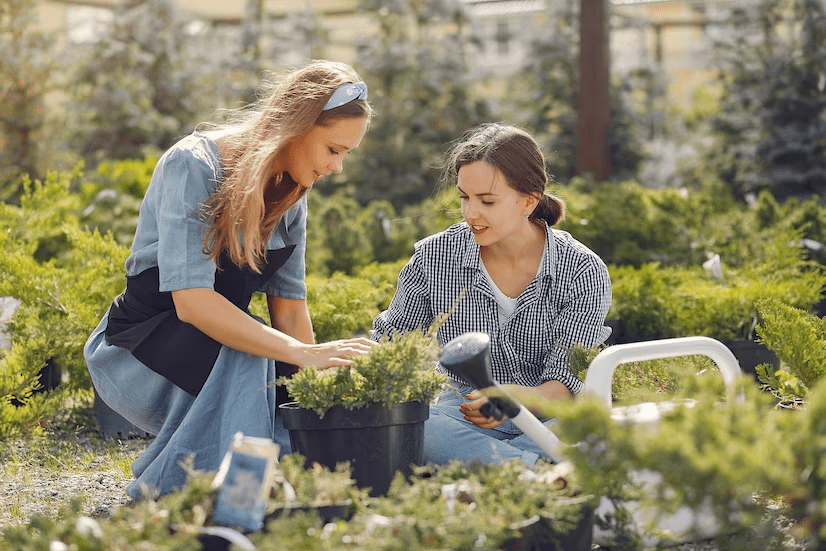As time passes and our societies become more environmentally conscious, many seek sustainable lifestyle options. There is no shortage of ideas, from reducing energy use to purchasing any number of eco-friendly products. But did you know a straightforward activity could turn even the most diehard couch potato into a green-thumbed enthusiast?
Gardening! With its accessibility, affordability, and environmental impact reduction potential, it may be the solution we’ve been searching for all along. Keep reading to discover why gardening could become your go-to habit for a healthier planet!
What is sustainable gardening and why it matters
Sustainable gardening is more important now than ever before. At its core, sustainable gardening involves using environmentally friendly practices to cultivate your garden. As we persist in dealing with the negative impacts of climate change., Sustainable gardening plays a vital role in helping to mitigate these effects.
Start with an online gardening course for beginners to learn how to tap into the power of sustainable gardening in your backyard. By focusing on techniques like composting and planting native species, you can create a garden that is not only beautiful but also helps sustain the environment. So whether you have a small plot of land or acres of property, sustainable gardening is a socially conscious and practical way to contribute to the planet’s health.
Considerations for starting a garden
Starting a garden can be an extremely fulfilling and rewarding experience. However, before getting started, it’s essential to consider some crucial factors:
- Assess your available space, and if you have a small yard or balcony, consider starting with container gardening.
- It’s essential to consider the amount of sunlight your garden will receive, as different plants have varying requirements. Your soil type also plays a significant role in determining which plants will thrive in your garden.
- It’s vital to consider the time and effort you are willing to commit to maintaining your garden.
By carefully considering these factors, you can create a beautiful garden with fresh produce, flowers, and a wonderful outdoor experience.
How to choose the right plants for your space
Choosing the right plants for your space can be daunting, but with some planning and research, you can create a beautiful and thriving indoor or outdoor oasis. The first step is to assess your environment. Take note of the amount of sunlight, temperature, and humidity levels in the area where you plan to place your plants.
This information will help you understand which plants will thrive in your space. Next, consider your style and preferences. Do you prefer low-maintenance plants, or are you willing to put in the effort for a more high-maintenance plant? Are you looking for plants with colourful foliage or fragrant blooms? Lastly, think about the size of your space and what type of plants will fit comfortably. By considering all of these factors, you can choose the right plants for your area and enjoy the benefits of a beautifully crafted environment.
Tips for sustainable soil management
The importance of sustainable soil management cannot be overstated. As we continue to face the effects of climate change, it’s more important than ever to take care of our soil. Fortunately, there are a variety of tips and tricks that can help us achieve this goal. For example, planting cover crops can help prevent soil erosion and increase nutrient levels.
Additionally, composting and using natural fertilisers can help reduce the use of harmful chemicals and promote healthy soil. By incorporating these sustainable practices into our gardening and farming processes, we can help protect our environment and ensure a healthy future for generations.
Nutrient-rich composting methods
Gardening can be a fulfilling and rewarding experience, but it can also be frustrating if your plants aren’t thriving. That’s where nutrient-rich composting methods come in. Composting is a natural process of breaking down organic material into a nutrient-rich soil amendment that can improve soil quality and plant growth.
There are various composting methods to choose from, each with its advantages and disadvantages. Whether you decide to compost using worms, a tumbler, a pile, or a combination of methods, the result will be a rich, dark soil amendment that will improve the health of your garden for years to come. Not only is composting good for your garden, but it’s also good for the environment – by keeping organic waste out of landfills, you’re reducing greenhouse gas emissions and helping to combat climate change.
Rainwater harvesting techniques
Rainwater harvesting is an eco-friendly approach to water conservation that involves collecting and storing rainwater for later use. With rainfall becoming increasingly unpredictable due to climate change, the need for sustainable water management practices has never been more critical.
There are several techniques for rainwater harvesting, such as rooftop rainwater harvesting, surface runoff harvesting, and groundwater recharge. By implementing these methods, we can reduce our reliance on groundwater and expensive water treatment plants and contribute to the preservation of the environment. Rainwater harvesting is an excellent way to positively impact the world while ensuring a more sustainable future for generations to come.
Conclusion
Sustainable gardening is an eco-friendly way to grow produce and flowers. It reduces the use of chemicals and conserves natural resources like water. With careful planning and consideration, creating a sustainable garden can be straightforward and provide environmental benefits. Composting and harvesting rainwater are efficient methods to nourish plants without relying on other sources. Let’s aim for a greener future by being conscious of our gardening practices and environment.


